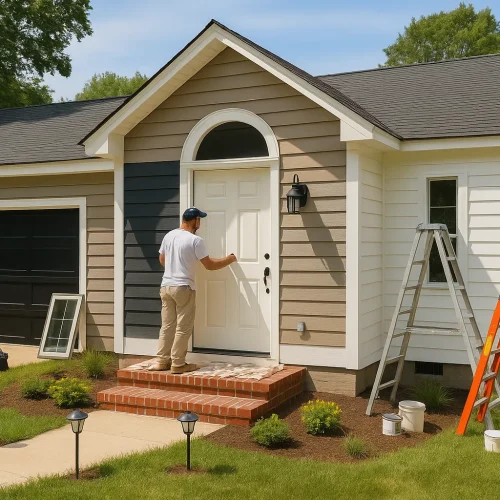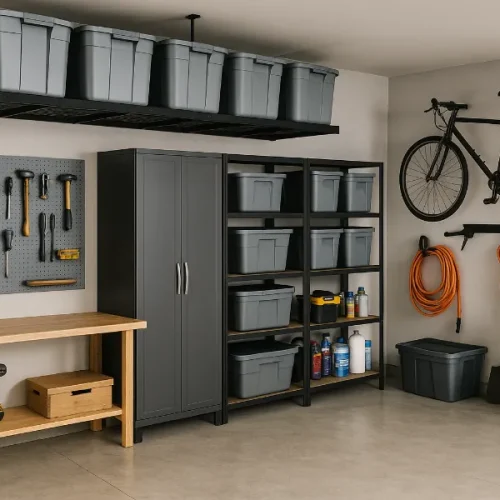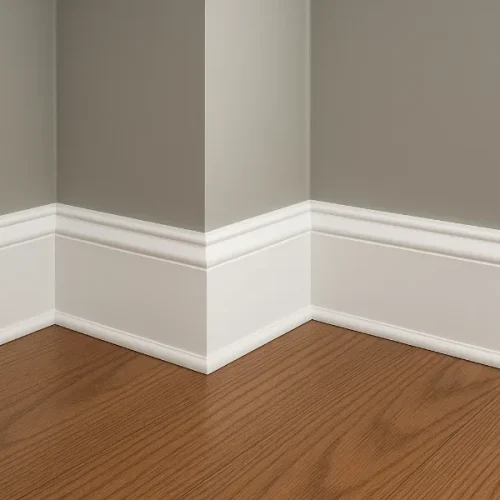If you’ve ever spent twenty minutes looking for a hammer that was “just right there,” you know the frustration of a messy garage. Figuring out how to organize tools in garage spaces can feel overwhelming at first. But here’s the good news: with a solid system in place, your garage can go from a cluttered headache to a highly functional workspace. Whether you’re a weekend DIYer, a car enthusiast, or just someone tired of tripping over wrenches, there are strategies that will help you reclaim order.
This guide pulls from some of the most effective garage organization systems and tool storage ideas, giving you actionable steps to transform your space into a tidy, efficient hub.
Take Inventory and Categorize Tools
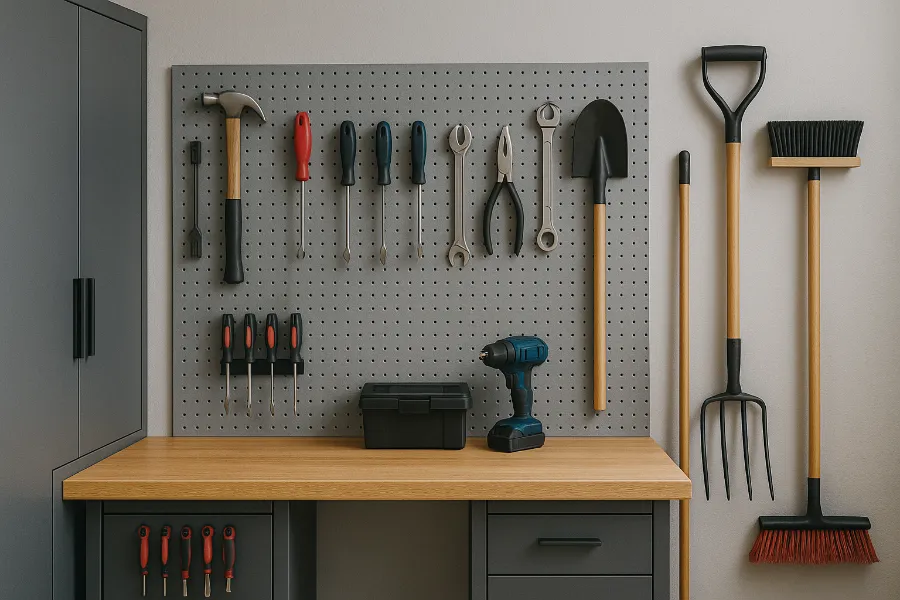
Before diving into hooks, cabinets, and fancy storage systems, start with a simple but often overlooked step: taking inventory. Lay out everything you own. Group similar items together—power tools in one section, hand tools in another, gardening equipment in its own pile.
This process not only helps you see what you have but also forces you to make decisions about what to keep, donate, or toss. A cluttered garage often isn’t a space problem—it’s a stuff problem. By categorizing first, you’ll build a strong foundation for a smarter organization system.
Create Zones for Different Tool Types
Once you’ve sorted your tools, it’s time to designate zones in your garage. Think of it like creating a mini hardware store within your home.
- Woodworking zone: For saws, clamps, chisels, and measuring tools.
- Automotive zone: For wrenches, jacks, oil supplies, and diagnostic tools.
- Gardening zone: For shovels, rakes, pots, and soil.
- General hand tools: For hammers, screwdrivers, pliers, and tape measures.
By placing tools where you’ll use them most often, you reduce wasted time. For instance, a cabinet for woodworking tools right next to your workbench saves you countless steps during a project.
Choose the Right Storage Solutions
The secret to how to organize tools in garage spaces lies in mixing and matching the right storage solutions. No single method works for everything—you need a system that’s versatile and tailored to your needs.
Cabinets for Dust Protection and Security
Garage cabinets are excellent for keeping tools out of sight, safe from dust, and away from curious kids. Opt for lockable cabinets if you have expensive or hazardous tools. Floor-to-ceiling systems maximize vertical space, while shallower models are perfect for small garages.
Pegboards and Slatwall Panels
These are classics for a reason. Pegboards let you see everything at a glance, preventing the dreaded “where did I put that screwdriver?” moment. Slatwall panels take it up a notch by supporting heavier tools and offering a more polished look.
Hooks, Racks, and Magnetic Strips
Large hooks are ideal for awkward items like ladders, hoses, or even folding chairs. Magnetic strips keep small metal tools like screwdrivers, drill bits, and wrenches within arm’s reach. This combination clears up counter space while making frequently used tools easy to grab.
Clear Bins, Totes, and Jars
For tiny items—nails, screws, washers—clear storage is your best friend. Mason jars, clear plastic totes, or stackable bins with labels prevent the chaos of digging through random coffee cans or bags. Transparent containers save time by making contents instantly visible.
Workbench and Mobile Storage Ideas
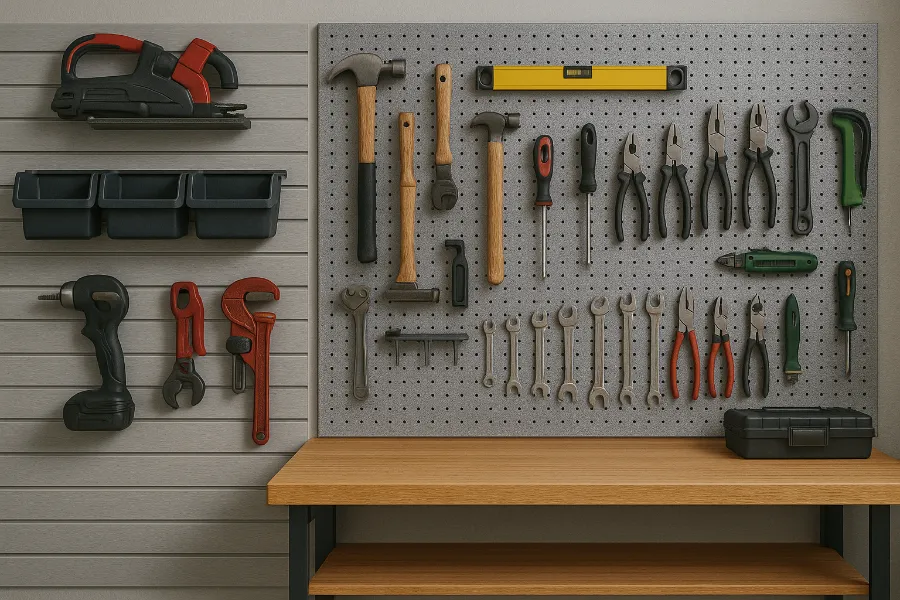
A sturdy workbench is the anchor of a well-organized garage. Go beyond a flat surface by choosing a bench with built-in drawers or shelves. For extra flexibility, consider a mobile workbench on casters. It lets you bring your workstation to wherever the project is happening—whether it’s in front of your car or by the garden tools.
If space is tight, a fold-down workbench is a game-changer. It provides a solid surface when needed and folds neatly against the wall when not in use.
Wall and Ceiling Storage for Space Efficiency
Most garages have one thing in common: wasted vertical space. Walls and ceilings are gold mines for storage.
- Ceiling racks are perfect for rarely used items like holiday decorations or camping gear, freeing up ground-level space for daily tools.
- Pulley systems can suspend bicycles or bulky ladders overhead.
- Corner shelves maximize those awkward unused areas.
By looking up and out instead of just down, you’ll double your storage capacity without expanding your garage.
Tool Drawer Organization Tips
Drawers often become junk zones. The trick? Dividers. Sort tools into sections so everything has a dedicated spot. Rubber drawer liners prevent items from sliding around, keeping things neat. Label drawers so even family members know where things belong. Place your most-used tools in the top drawers for quick access, and stash rarely used items in lower drawers.
Garden and Seasonal Tool Storage
Garden tools are notorious clutter creators. Rakes leaning against the wall, hoses coiled on the floor—it’s a recipe for chaos. A slatwall or pegboard keeps long-handled tools upright and secure.
For seasonal tools like snow shovels or leaf blowers, overhead racks or lockers keep them out of the way until they’re needed. Grouping seasonal items together ensures you don’t waste time digging through summer gear in the middle of winter.
Power Tool and Battery Storage Solutions
Cordless power tools are incredibly convenient—until you misplace the chargers or batteries. Build a dedicated charging station with labeled slots for each tool. Mount power strips near your workbench to eliminate dangling cords. Consider drawers with built-in outlets or USB ports for an efficient, clutter-free solution.
Safety Considerations in Garage Tool Organization
An organized garage isn’t just about efficiency; it’s also about safety. Keep heavy or sharp tools either locked away or secured high on the wall. Have a fire extinguisher and first aid kit nearby. Adequate lighting is essential—poorly lit spaces increase the risk of accidents.
And remember: clutter on the floor is more than unsightly. It’s a tripping hazard, especially if you’re carrying heavy equipment.
Preventing Rust and Maintaining Tools
Even the best-organized garage can ruin tools if moisture is a problem. Garages are prone to humidity, which means rust. To protect your investment:
- Run a dehumidifier in damp climates.
- Line shelves and drawers with anti-rust mats.
- Store silica gel packets inside toolboxes.
- Keep the garage ventilated to reduce condensation.
With these steps, your tools will last longer and work better.
Extra Tips for Small Garage Organization
Working with limited space? You can still nail how to organize tools in garage areas effectively.
- Choose shallow cabinets (around 18 inches deep) to save floor space.
- Install a fold-down bench instead of a permanent workbench.
- Use rolling carts that tuck away when not in use.
- Store seasonal or rarely used tools near the ceiling to free up prime wall space.
Small garages demand creativity, but with the right systems, they can be just as functional as larger spaces.
Keeping Your Garage Clean and Well-Lit
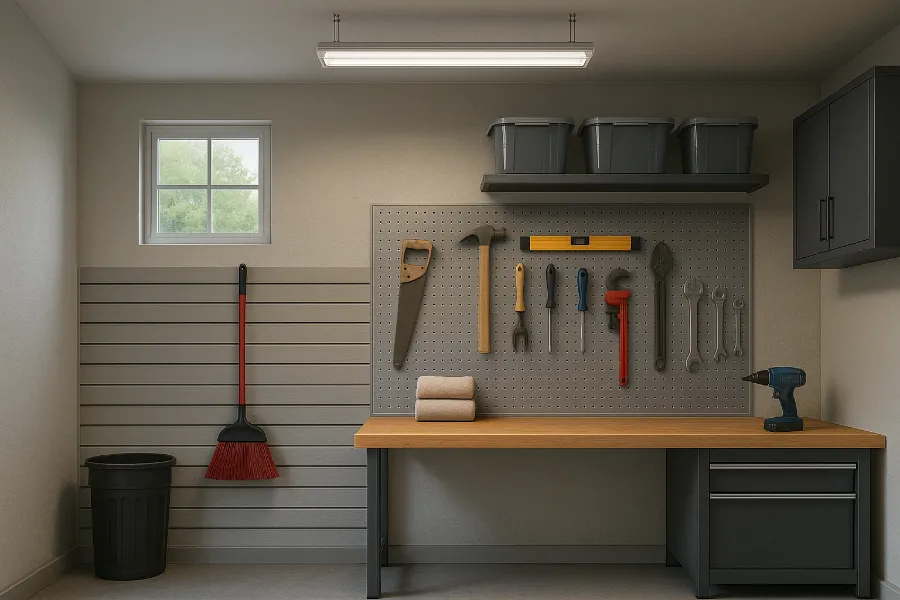
Organization isn’t a one-time project. Keeping a garage clean requires upkeep. Invest in a good shop vacuum, broom, and spill absorbents. Wipe surfaces regularly to prevent dust buildup.
Lighting matters too. Replace dim bulbs with bright LEDs, and add task lighting over your workbench. If possible, increase natural light with windows or skylights. A brighter space is not only safer but also more inviting to work in.
Conclusion: The Benefits of an Organized Garage
Learning how to organize tools in garage spaces isn’t just about tidiness. It’s about saving time, reducing stress, protecting your investments, and making your garage a safer place. From cabinets and pegboards to ceiling racks and charging stations, the right systems transform a chaotic room into a streamlined workshop.
Start small. Sort, categorize, and pick one storage upgrade to tackle first. Over time, your garage will become more than just a place to park your car—it will be a fully functional extension of your home.



